5. Wonders of Life & Body Wars
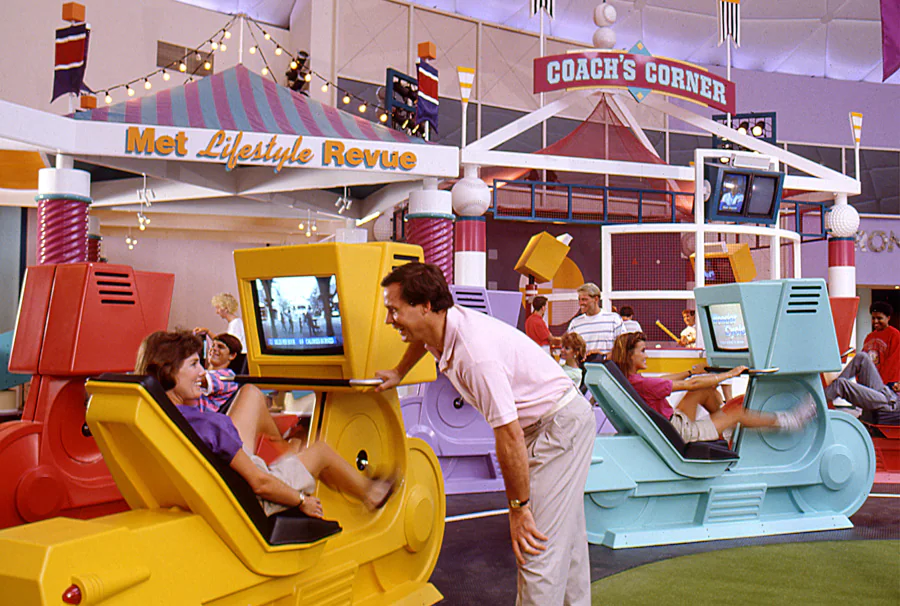
Our THEN & NOW series saw a whole lot of EPCOT Center pavilions whose interiors got swapped out over time. But the Wonders of Life pavilion is unique. First of all, it opened long after the rest of EPCOT – in October 1989. Second, unlike the lengthy, educational, informative, Audio-Animatronics filled dark rides that anchored the rest of Future World’s pavilions, the headliner in Wonders of Life was the Lost Legend: BODY WARS – a turbulent, queasy, microscopic journey into the human body using the same ride system as STAR TOURS (which made its debut in Walt Disney World just two months after).
Finally, Wonders of Life differs from the rest of EPCOT Center’s cast of “THEN & NOW” pavilions because there is no “NOW.” At least, not yet. Wonders of Life closed forever in 2007. The 250-foot diameter space under a golden, 65-foot high geodesic dome served as the park’s Festival Center starting in 2007, with visitors to annual events watching as remnants of Wonders of Life disappeared year-by-year. But even that ended in 2018, and the pavilion has been walled off ever since.
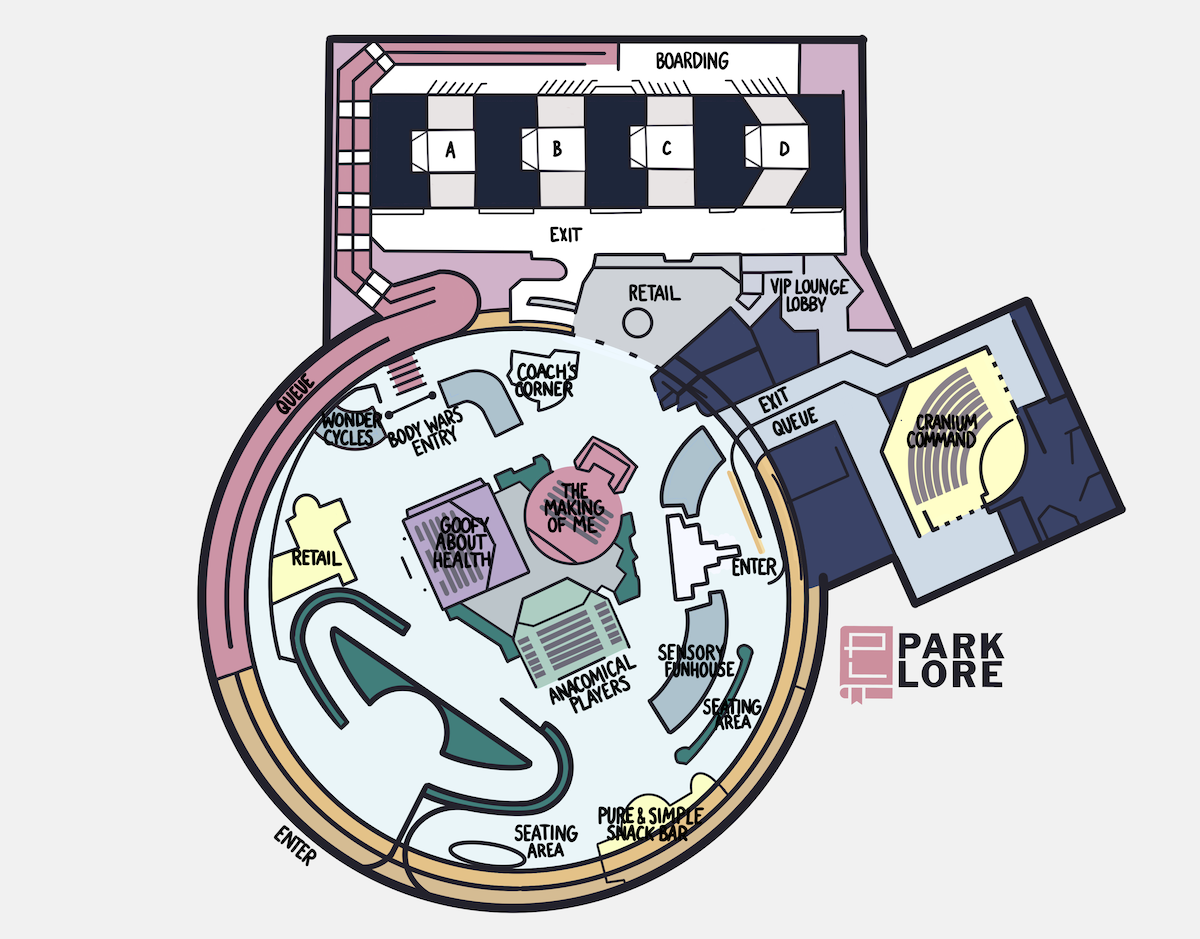
Like The Land or The Seas, Wonders of Life was a true “pavilion” in the sense that it wasn’t just a ride, but instead a complex containing multiple attractions shows, and dining & retail options. Based on a “Midway of Life” concept dreamed up for an earlier, unbuilt health pavilion, the cavernous, sunlit interior of Wonders of Life looked like a cross between a shopping mall and a fitness center. Guests descended down curving ramps around indoor planters and found themselves in a space dotted with geometric shapes and pastel colors plucked straight from the ’90s.
Aside from Body Wars, the pavilion’s biggest draw was Cranium Command – a comical show in which guests were recruited to help pilot “the most unstable craft in the fleet”: a twelve year old boy. The pavilion also offered three smaller theater spaces in its center: Anacomical Players (a health and nutrition-based improv show), Goofy About Health (continuously showing clips from Goofy shorts), and The Making of Me (a film about conception and birth starring Martin Short).
Given that the geometric patterns and pastel prints of the ’90s are back in style, maybe Wonders of Life would look like a fun, retro-nostalgic nod if it had survived to today. But more than likely, it would look like what it was: a remnant of another era needing a major makeover that – after the 2001 exit of MetLife – had no sponsor to fund it.
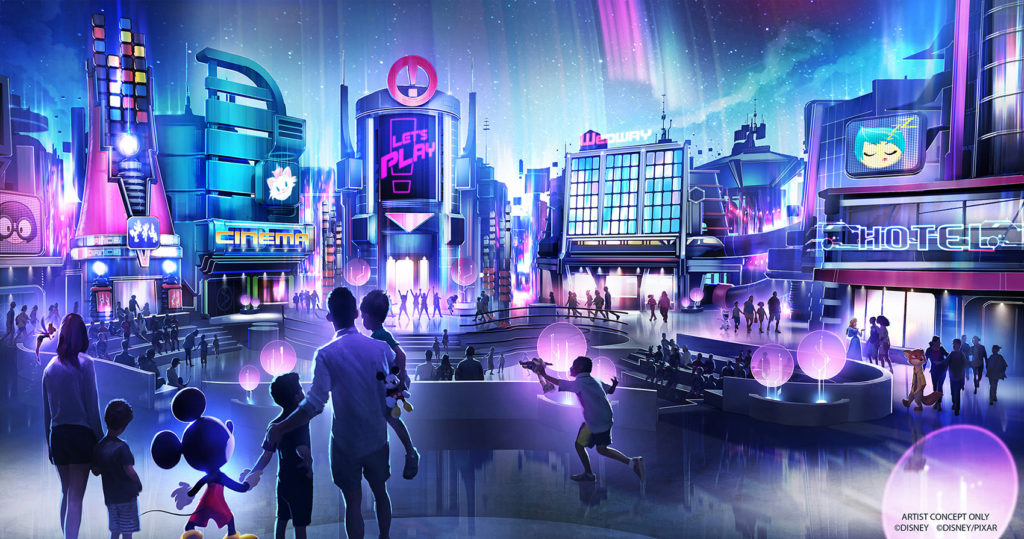
In 2019, Disney announced that as part of EPCOT’s ongoing reimagining, the odd, empty, gold pavilion would become the “PLAY!” pavilion – a glowing, digital metropolis of emoji-stylized Disney, Pixar, Marvel, and Star Wars characters meant to make EPCOT a little more family friendly. Like Wonders of Life, Play was planned to include multiple interactive attractions, experiences, and theaters… but unlike Wonders of Life, it probably wouldn’t have included a ride. By most accounts, the old Body Wars simulators are gone, no doubt used for spare parts to keep Star Tours up and running.
Thanks to the financial fallout of the pandemic, many sources reported that the Play pavilion had been scaled back, slowed down, or stalled entirely. Still, references to the pavilion as “Coming Soon” remained on EPCOT park maps (the only real signal that the project was still alive) until January 2023 when the old Wonders of Life returned to being unlabeled. In March 2023, as part of company-wide layoffs, returned CEO Bob Iger officially ended Disney’s pursuit of the “metaverse,” eliminating the company’s short-lived “Next Generation Storytelling” division. Given that it was largely believed that that group was responsible for programming the Play pavilion, it seems certain that EPCOT’s gold dome will remain empty for the foreseeable future.
6. Harry Potter and the Forbidden Journey
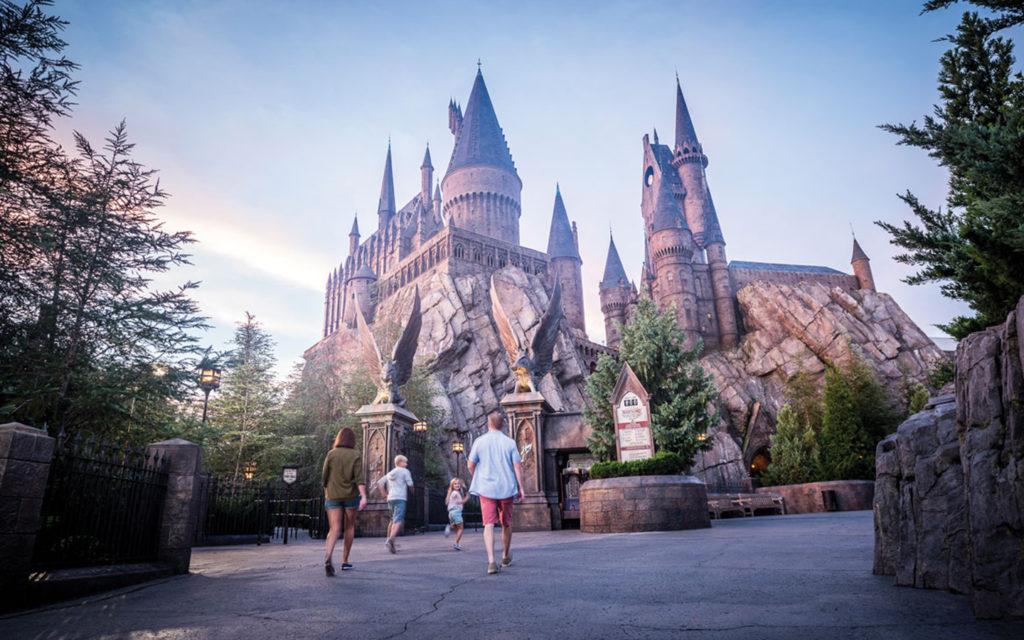
If you stood at the exit of Harry Potter and the Forbidden Journey and asked exiting guests, “So, what kind of ride is it? How does it work?’ a majority would probably say, “I don’t know.” It’s not every day that a genuinely, legitimately new ride system makes its debut, and rarely has any been as extraordinary a leap forward as Harry Potter and the Forbidden Journey. In fact, we ranked the ride’s innovative system among our Seven Modern Wonders of the Theme Park World – and for good reason!
So what is it? How does it work? Basically, curl your fingers into your palm and pretend each of them is a seated rider. Now, imagine removing your arm at the shoulder and affixing it to a platform with wheels on a ride track. The range of motion your “finger riders” could experience by way of your shoulder joint, elbow joint, and wrist joint basically represent all the thing that Forbidden Journey’s ride system can do. Your “enchanted bench” is literally attached to a KUKA Robo Arm – commonly used in manufacturing – that’s traveling along a ride track.
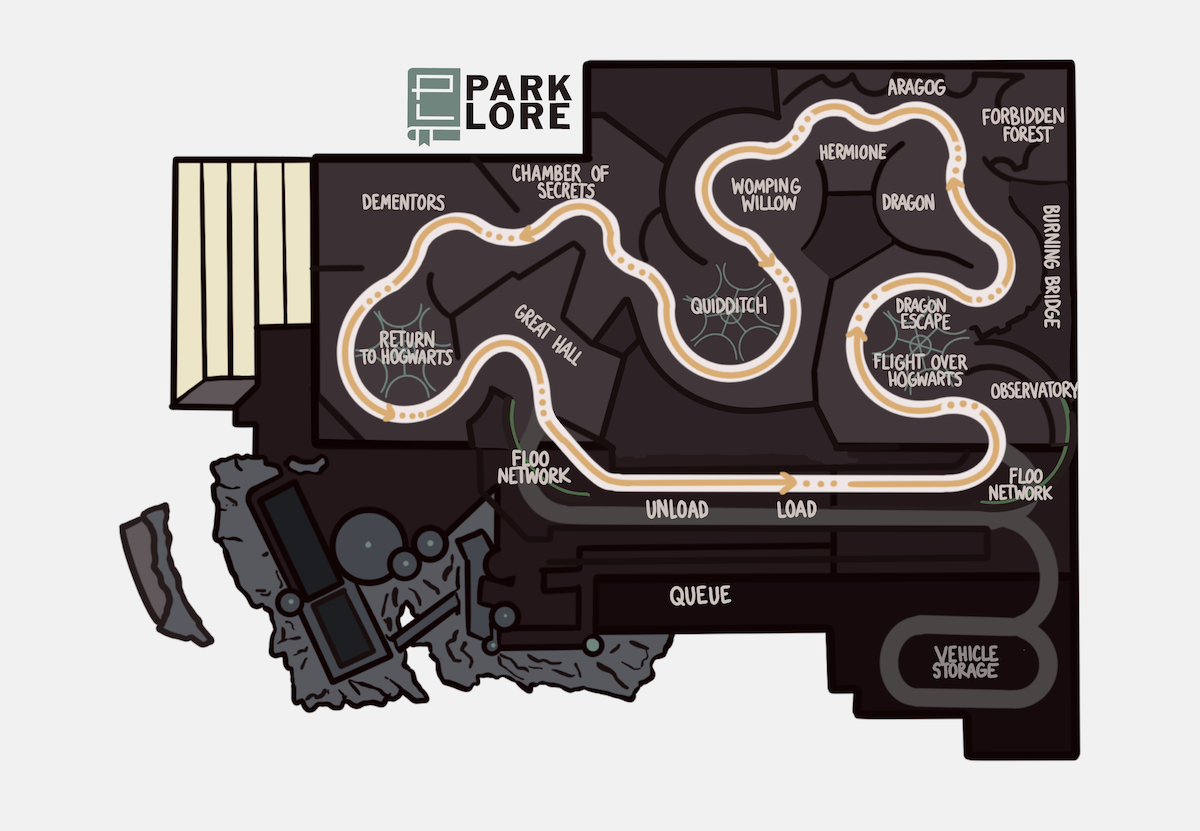
Despite appearances (or rather, sensations), every one of the ride’s arms moves through the entire attraction continuously and at a constant speed. Three times along the ride’s course, the “enchanted benches” are swung into personal, domed screens for brief “motion simulator” scenes. Even then, the arms are continuing forward along the track. It’s just that the domed screens are moving, too – outward-facing and continuously revolving on a “carousel” themselves.
Alright – narratively, Forbidden Journey is a mess, basically setting every bad guy from the Wizarding World lose on riders in non-sequitur scenes with little sense of spacial consistency. But who cares? Forbidden Journey gives Potter fans everything they want from a “best of” tour of Hogwarts, and there’s no doubt that it stands as one of the greatest modern dark ride innovations on Earth.
7. Alice in Wonderland
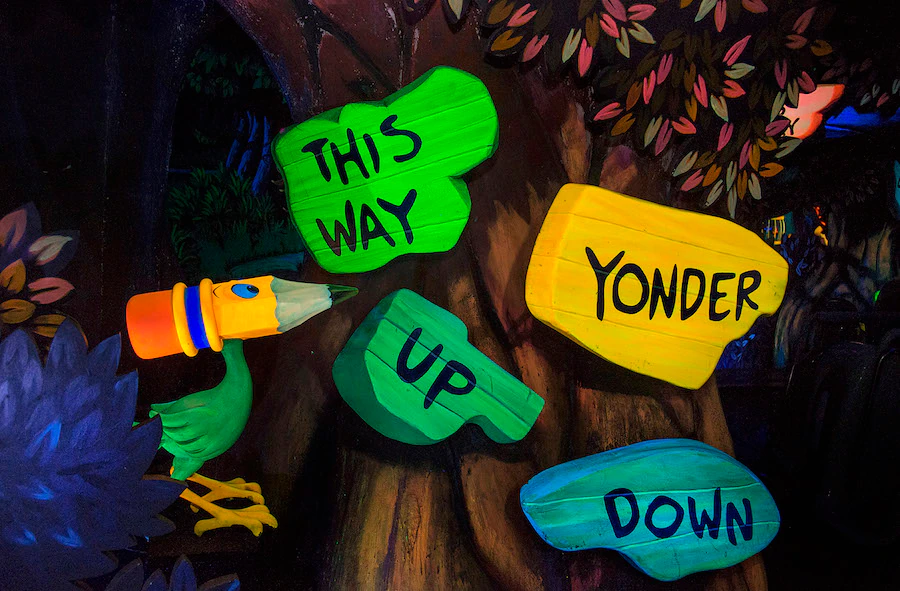
Every “Castle Park” has an attraction based around the story of Alice in Wonderland. In California, Florida, Japan, Paris, and Hong Kong, it’s a spinning teacup ride. Both Disneyland Paris and Shanghai Disneyland have walkthrough mazes based on the character. (Paris’ is stylized after the 1951 animated version while Shanghai’s keys off of Tim Burton’s 2010 live action version.) Alice and her Wonderland friends can be found in countless parades, shows, and meet-and-greets, too.
Every “Castle Park” also has a Fantasyland, and every Fantasyland has at least one “classic” storybook dark ride, generally featuring flat cutouts, simple mechanical figures, and of course, iconic, glowing, blacklight-reactive paint. Some rides – like Peter Pan’s Flight and the Many Adventures of Winnie the Pooh – can be found at nearly every resort.
So every “Castle Park” has a dark ride, and every “Castle Park” has an Alice in Wonderland ride, but only the original Disneyland has an Alice in Wonderland dark ride.
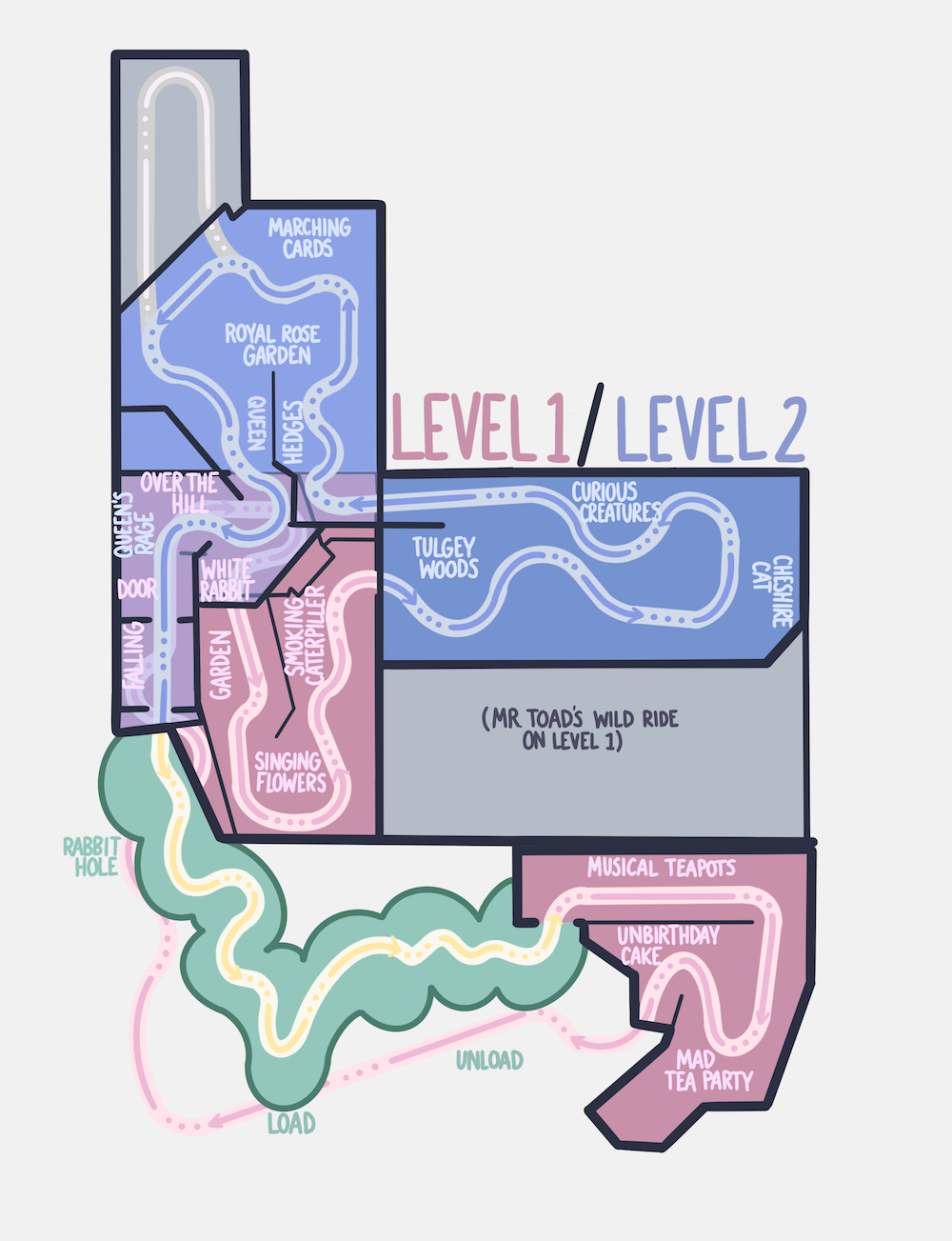
Opened in 1958 (and substantially reimagined as part of New Fantasyland in 1983), Disneyland’s Alice in Wonderland is a one-of-a-kind, indoor-outdoor, multi-level dark ride that makes clever use of space in the infamously tiny park. The ride begins outdoors, then journeys “down the rabbit hole.” Its first scenes actually see riders’ caterpillars gradually climb up to a second story, where some of the action takes place above Mr. Toad’s Wild Ride and Peter Pan’s Flight.
The caterpillars then emerge on a winding, leafy vine that descends back to ground level for a separate first-floor finale. The kinetic, wacky attraction with its winding path is a delightful representation of the Technicolor absurdity of Alice. Plus, combined with the lantern-lit Mad Tea Party, it creates a little Wonderland sub-section within Fantasyland. Even better, the ride was the first of Disneyland’s Fantasyland classics to be “shined up” in the lead-up to the park’s 60th Anniversary, gaining beautifully-integrated projection mapping, lighting, and audio that feel like they’ve always been there.
18. E.T. Adventure
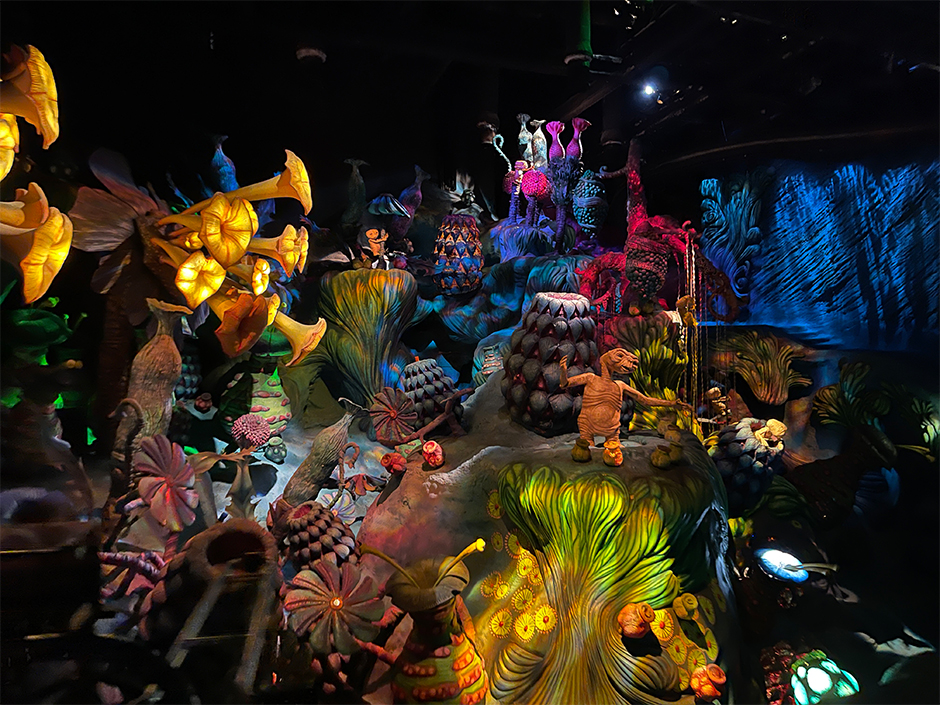
Universal Studios Florida isn’t exactly a park known for embracing nostalgia. Just the opposite, Universal’s studio park has a fairly brutal reputation when it comes to keeping its lineup current, even if it means bulldozing beloved classics as if they were meant to be temporary. With a legendary cast of Lost Legends – Kongfrontation, JAWS, Back to the Future: The Ride, Nickelodeon Studios, Terminator 2: 3-D, and Earthquake – it’s easy to believe that every remnant of the park’s 1990 opening has disappeared.
But actually, Universal Studios retains a single Opening Day Original: E.T. Adventure. One of few respites from the park’s otherwise terrifying lineup of “creature feature” original rides, E.T. Adventure was designed in conjunction with Steven Spielberg as a sort of sequel to the 1982 film E.T. the Extra-Terrestrial. In a video pre-show, Spielberg introduces the idea that E.T.’s home world – “The Green Planet” – is dying, and that our job is to return the lovable alien so that his healing touch can restore the planet and the characters who live there.
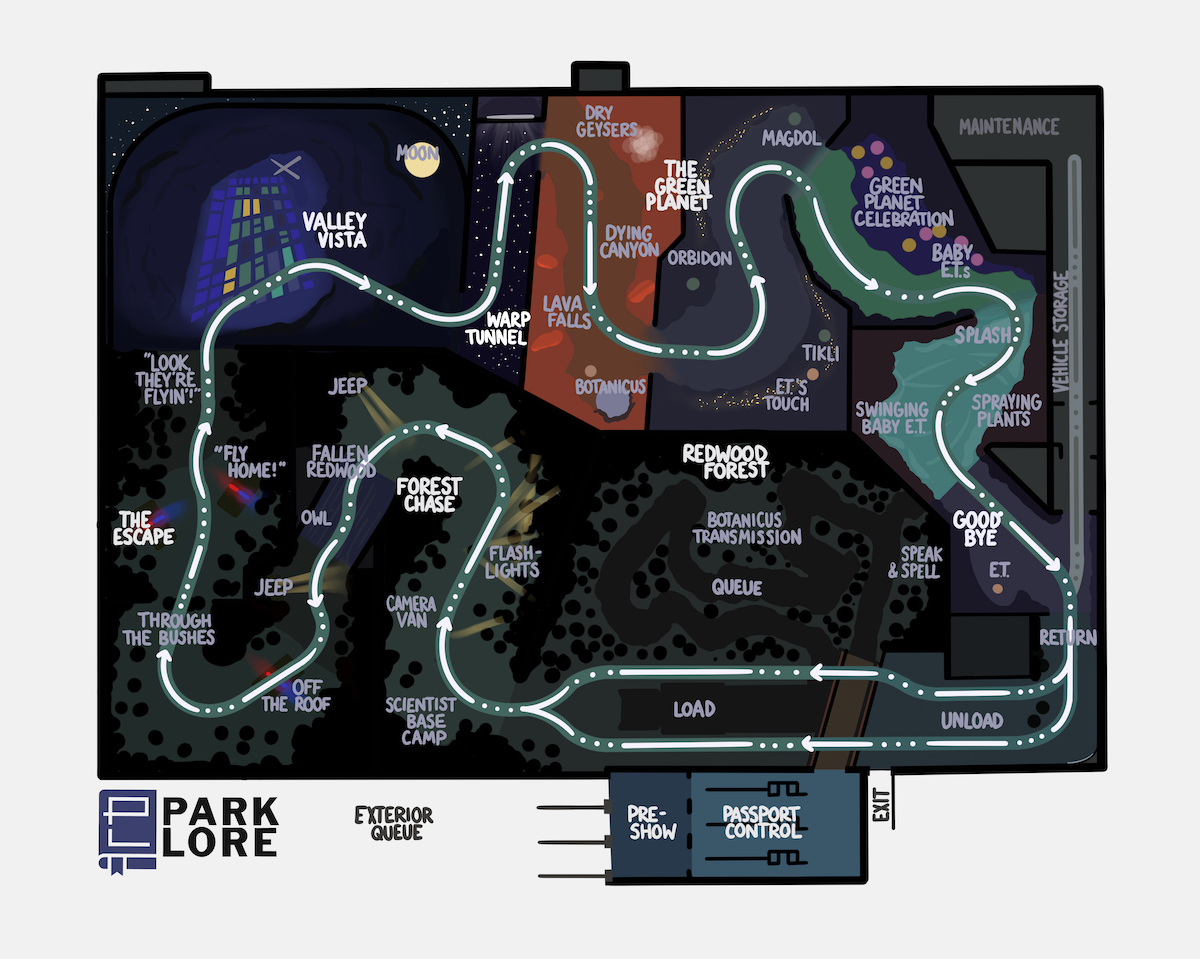
The ride’s queue famously takes place in a dense, dark, fragrant redwood forest where interstellar transmissions from E.T.’s teacher Botanicus calls him home. Guests board bicycles (batched in groups of 12, set on a platform that’s suspended from track overhead) and set-off on a chase through the woods as (lovingly simple) animatronic scientists and police officers give chase. Climbing a wooded hillside, the bikes at last give flight as a police officer cries, “Look, they’re flyin’!” As John Williams’ iconic score kicks in, the vehicles at last lean into their suspended system, flying over a miniature town not unlike the view of London on Peter Pan’s Flight.
The ride’s second half sees guests arrive at the grizled, fiery Green Planet, looking none too green and far worse for the wear. But our return sees E.T. awaken his friends (a rather odd bunch of characters developed just for the ride, including the rooty Tikli, the fungal Orbidon, and the flowery Magdol), setting off a celebration.
Famously, the ride concludes with the “personal moment” Spielberg required of the ride, where E.T. thanks each rider by name (courtesy of “Interstellar Passports” guests acquire in line and turn into team members before boarding). Obviously the whole thing is lovingly hokey and hilariously outdated, but E.T. Adventure is the perennial classic in a park that tends to favor progress over preservation. Its continued existence is at once an oddity, an obligation, and an outstanding move by Universal.


